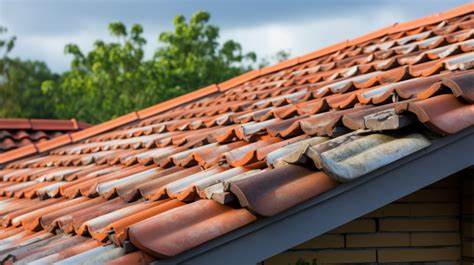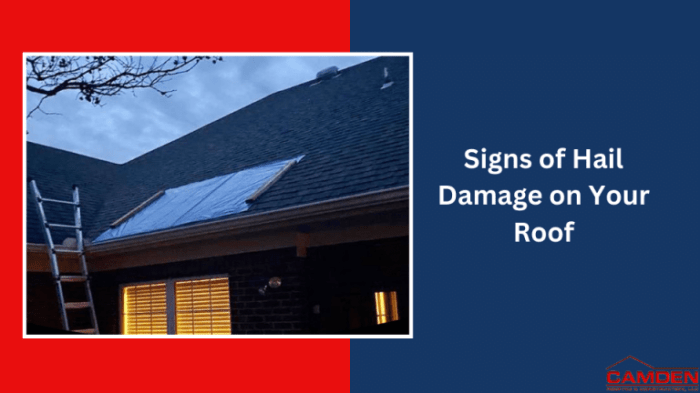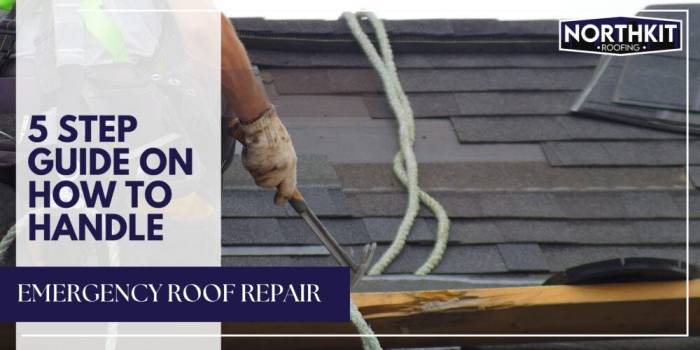Exploring the realm of How Roofing Companies Handle Emergency Repairs brings to light the crucial strategies and tactics employed in times of crisis. Delve into this informative piece crafted to provide a captivating insight into the world of emergency roofing repairs.
 Detailing the key aspects of preparation, immediate response procedures, safety protocols, communication with customers, and the importance of maintaining quality workmanship, this guide is a must-read for those seeking a deeper understanding of this vital industry.
Detailing the key aspects of preparation, immediate response procedures, safety protocols, communication with customers, and the importance of maintaining quality workmanship, this guide is a must-read for those seeking a deeper understanding of this vital industry.
 When it comes to emergency roofing repairs, time is of the essence. Roofing companies have specific procedures in place to ensure a quick and efficient response to emergency repair calls.
When it comes to emergency roofing repairs, time is of the essence. Roofing companies have specific procedures in place to ensure a quick and efficient response to emergency repair calls.
 When it comes to emergency repair work, roofing companies prioritize safety above all else. Implementing strict safety protocols and providing the necessary equipment is essential to ensure the well-being of their team members and the protection of the property.
When it comes to emergency repair work, roofing companies prioritize safety above all else. Implementing strict safety protocols and providing the necessary equipment is essential to ensure the well-being of their team members and the protection of the property.
 Maintaining high-quality workmanship during emergency repairs is crucial for roofing companies to ensure the safety and longevity of the repairs. This involves using skilled and experienced roofing professionals, as well as following industry best practices and standards.
Maintaining high-quality workmanship during emergency repairs is crucial for roofing companies to ensure the safety and longevity of the repairs. This involves using skilled and experienced roofing professionals, as well as following industry best practices and standards.
 Detailing the key aspects of preparation, immediate response procedures, safety protocols, communication with customers, and the importance of maintaining quality workmanship, this guide is a must-read for those seeking a deeper understanding of this vital industry.
Detailing the key aspects of preparation, immediate response procedures, safety protocols, communication with customers, and the importance of maintaining quality workmanship, this guide is a must-read for those seeking a deeper understanding of this vital industry.
Preparation for Emergency Repairs
Having a plan in place for emergency roofing repairs is crucial for roofing companies to effectively handle unexpected situations that may arise. It ensures that the team is prepared to respond promptly and efficiently, minimizing potential damage and risks.Key Elements for Emergency Repair Preparation
- Establishing a clear communication protocol to quickly mobilize the emergency response team and coordinate efforts.
- Maintaining a list of emergency contacts, including suppliers, contractors, and relevant authorities, to facilitate swift action.
- Regularly inspecting and maintaining emergency repair equipment to ensure functionality and readiness when needed.
- Creating a detailed emergency response plan outlining roles, responsibilities, and procedures to follow in different scenarios.
- Identifying vulnerable areas in advance and implementing preventive measures to mitigate potential risks.
Role of Training and Drills
Training plays a crucial role in preparing roofing teams for emergency situations by familiarizing them with protocols, equipment, and best practices. Conducting regular drills simulating emergency scenarios helps teams practice their response, improve coordination, and enhance their readiness to handle real-life emergencies effectively.Immediate Response Procedures
 When it comes to emergency roofing repairs, time is of the essence. Roofing companies have specific procedures in place to ensure a quick and efficient response to emergency repair calls.
When it comes to emergency roofing repairs, time is of the essence. Roofing companies have specific procedures in place to ensure a quick and efficient response to emergency repair calls.
Typical Steps in Immediate Response
- Upon receiving an emergency repair call, roofing companies prioritize the severity of the issue.
- A team of experienced professionals is dispatched to assess the situation on-site.
- Roofing experts will quickly identify the source of the problem and develop a plan of action.
- Emergency repairs are initiated promptly to prevent further damage to the property.
- Regular communication is maintained with the property owner throughout the repair process.
Priority Based on Severity
- Roofing companies prioritize emergencies based on the level of threat posed to the property and its occupants.
- Issues such as severe leaks, structural damage, or potential collapses are addressed with the highest priority.
- Less urgent issues, such as minor leaks or cosmetic damage, may be scheduled for repair at a later time.
Importance of Quick Response Times
- Quick response times are crucial in emergency roofing repairs to prevent further damage and minimize costs.
- A prompt response can help mitigate risks such as water infiltration, mold growth, and structural compromise.
- Efficient repairs also ensure the safety and security of the property and its occupants.
Safety Protocols and Equipment
 When it comes to emergency repair work, roofing companies prioritize safety above all else. Implementing strict safety protocols and providing the necessary equipment is essential to ensure the well-being of their team members and the protection of the property.
When it comes to emergency repair work, roofing companies prioritize safety above all else. Implementing strict safety protocols and providing the necessary equipment is essential to ensure the well-being of their team members and the protection of the property.
Safety Measures and Protocols
Roofing companies follow a set of safety measures and protocols to minimize risks during emergency repairs. This includes conducting a thorough assessment of the site to identify potential hazards, securing the work area to prevent accidents, and establishing clear communication channels among team members.- Roofing teams are trained to prioritize safety at all times, following OSHA guidelines and regulations to prevent accidents and injuries.
- Before starting any repair work, teams conduct a safety briefing to review potential risks, emergency procedures, and the proper use of safety equipment.
- Proper fall protection systems, such as harnesses, lanyards, and anchor points, are used to prevent falls from rooftops and ensure the safety of workers at height.
- Regular safety inspections are carried out to maintain equipment, identify any potential issues, and ensure that safety standards are consistently met.
Essential Safety Equipment
Roofing teams rely on a range of essential safety equipment to protect themselves and the property during emergency repairs. This equipment is designed to minimize risks and ensure a safe working environment for all team members involved.- Personal protective equipment (PPE) is mandatory for all team members, including hard hats, safety glasses, gloves, and steel-toed boots.
- Fall protection equipment, such as harnesses, lanyards, and anchor points, is used to prevent falls from heights and ensure the safety of workers working on rooftops.
- Roof access equipment, such as ladders, scaffolding, and aerial lifts, is essential for safe and efficient access to the repair site.
- Fire extinguishers, first aid kits, and emergency response plans are readily available on-site to address any unforeseen incidents and ensure quick and effective responses in case of emergencies.
Communication with Customers
Effective communication with customers is crucial during emergency roofing repairs to ensure transparency, trust, and satisfaction throughout the process.Importance of Keeping Customers Informed
It is essential to keep customers informed about the repair process and timeline to manage their expectations and reduce anxiety. Clear communication helps build trust and confidence in the roofing company's services.Strategies for Managing Customer Expectations
- Provide a detailed initial assessment: Conduct a thorough inspection and communicate the findings to the customer, explaining the extent of the damage and the proposed repair plan.
- Set realistic timelines: Clearly Artikel the estimated duration of the repair work, considering factors like weather conditions and material availability.
- Regular updates: Keep customers informed of any changes or delays in the repair schedule, providing updates on the progress of the work.
- Address concerns promptly: Encourage customers to ask questions and address any concerns they may have, demonstrating a commitment to customer satisfaction.
- Follow-up communication: After the repair is completed, follow up with customers to ensure their satisfaction and address any post-repair issues that may arise.
Quality of Workmanship
 Maintaining high-quality workmanship during emergency repairs is crucial for roofing companies to ensure the safety and longevity of the repairs. This involves using skilled and experienced roofing professionals, as well as following industry best practices and standards.
Maintaining high-quality workmanship during emergency repairs is crucial for roofing companies to ensure the safety and longevity of the repairs. This involves using skilled and experienced roofing professionals, as well as following industry best practices and standards.
Challenges in Delivering High-Quality Repairs
- Time Constraints: Emergency repairs often require quick turnaround times, which can put pressure on roofing teams to work efficiently without compromising quality.
- Limited Resources: During emergency situations, access to materials and equipment may be limited, affecting the ability to deliver high-quality repairs.
- Weather Conditions: Adverse weather conditions can pose challenges for roofing teams, affecting the quality of workmanship during repairs.













